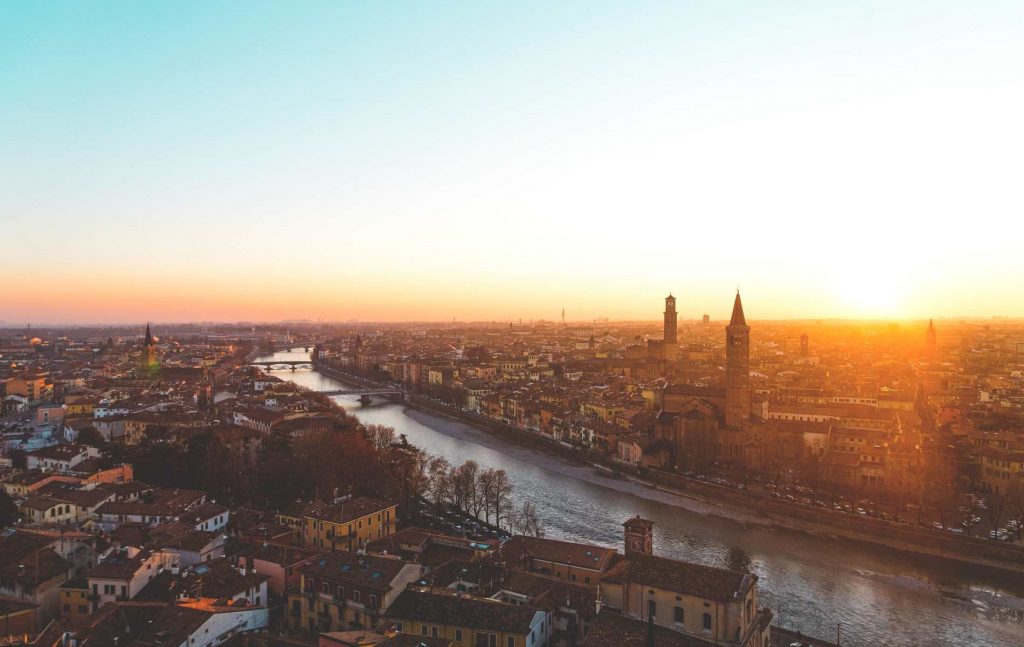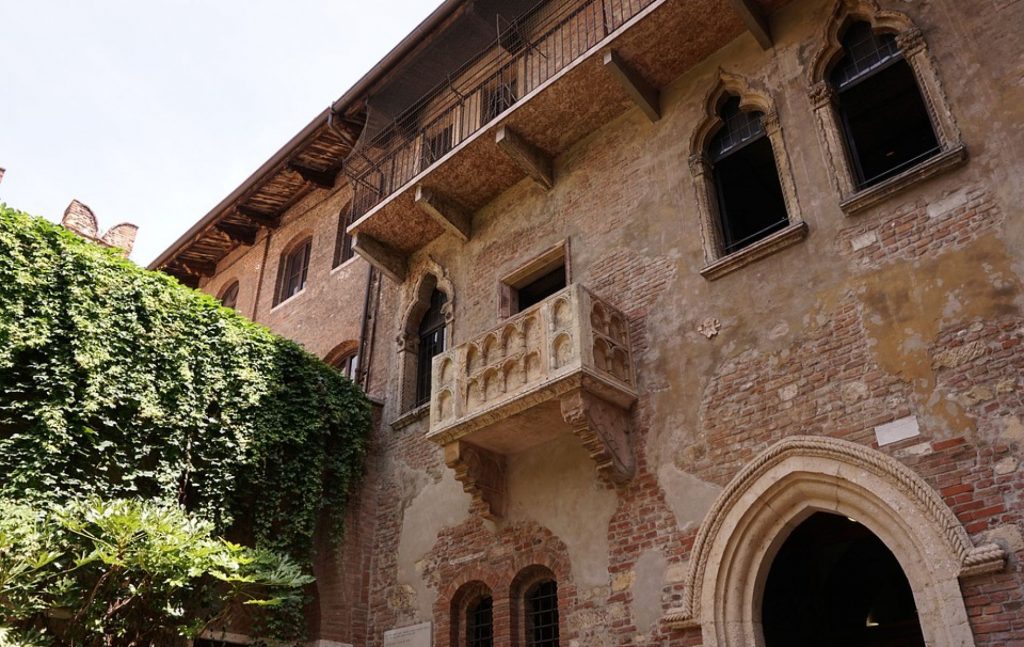5 PLACES TO DISCOVER IN VERONA
The Gran Guardia, on the other hand, dominates the southern edge of the Bra, along the walls that once served as a border with the “military viscount”. The building was used as a munitions depot in the early 16th century.
On the eastern side, where once stood the district of Sant’Agnese with the homonymous church and convent, Palazzo Barbieri, now stands the Town Hall of the City of Verona.
PIAZZA DELLE ERBE
The most ancient and intriguing square inside the historic center of Verona. Piazza delle Erbe, is located above the area of the Roman forum and it is one of the most popular Italian squares in the world. To the north you will find the imposing Torre dei Lamberti, 84 meters high, the Palazzo del Comune and the “Case dei Mazzanti” (Mazzanti houses), with their famous and fascinating frescoes. On the west side instead, there are the beautiful statues of Greek gods of Palazzo Maffei, in Baroque style.
To the south, you can look at the famous Casa dei Mercanti, or Domus Mercatorum, where the Bank of Verona is now located.
DISTRICT OF CASTELVECCHIO
Castelvecchio, is a medieval castle, originally called Castello di San Martino in Aquaro, one of the most important military monuments built by the Scaligerian family. The history of the castle and of the defense of the city from the Adige river side is rich in mystery and plot. Times, courtyards and secret passageways that tell a gripping past of intrigues, wars and power struggles. The Civic Museum of Castelvecchio, one of the most important in Verona, is worth a visit, with a rich fixed collection of medieval, renaissance and modern art and periodic exhibitions of the most significant works and artistic itineraries in the history of the city.
DUOMO OF VERONA
The Cathedral of Santa Maria Matricolare is the Cathedral of Verona, the main place of workship in the city. The Church dates back to the fourth century and still housed original mosaics of the time (in the cloister of the Church of Sant’Elena). ROMEO AND JULIET
The tragedy of William Shakespeare , composed at the end of 1500, is one of his most famous plays in the world and one of the most popular love stories in the whole Planet, so that numerous paintings, sculptures and then feature films and songs have been dedicated (Dire Straits, Romeo & Juliet) The two noble families of Verona, the Montecchi and the Cappelletti, fighting against Verona, were already known in the fourteenth century and written by Dante in his Comedy.
HOME OF GIULIETTA IN VERONA
The Museum or Juliet’s House in Verona is housed in an ancient medieval building, where the Del Cappello family probably lived. The popular legend tells that this is the real birthplace of Juliet.
The house recreates the typical atmosphere of a noble house of the ‘500 thanks to the frescoes and precious accessories. Inside the museum you can admire the costumes and stage furniture , used in the cult film Romeo and Juliet by Franco Zeffirelli (1968) .
JULIET’S TOMB
The Tomb of Juliet is hidden by the former convent of the Capuchin friars of the twelfth century, today the Museum of Frescoes.
HOUSE OF ROMEO
The Casa dei Montecchi is located in the via delle Arche scaligere, not far from that of Giulietta. A visit to the inner courtyard is not permitted as it is privately owned. The other part of the house is now occupied by the famous Osteria del Duca, where you can savor the most authentic Veronese specialties (bigoli with donkey ragout or polenta and soppressa.)




